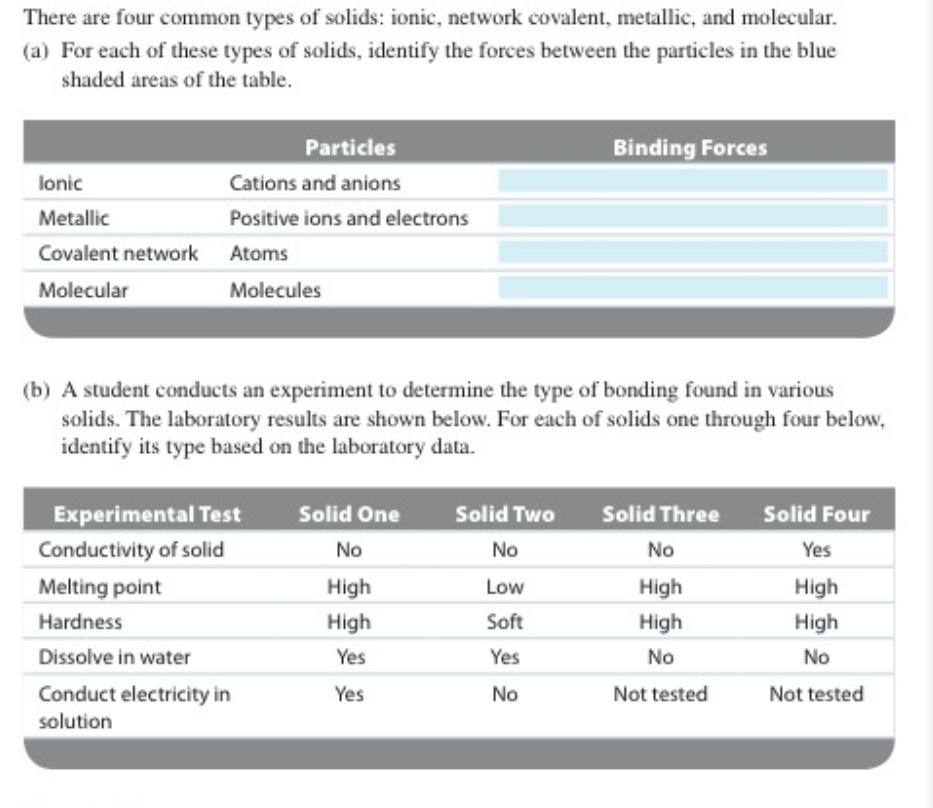Answered step by step
Verified Expert Solution
Question
1 Approved Answer
There are four common types of solids: ionic, network covalent, metallic, and molecular. ( a ) For each of these types of solids, identify the
There are four common types of solids: ionic, network covalent, metallic, and molecular.
a For each of these types of solids, identify the forces between the particles in the blue shaded areas of the table.
tableParticles,Binding ForcesIonicCations and anions,MetallicPositive ions and electrons,Covalent network,Atoms,MolecularMolecules,
b A student conducts an experiment to determine the type of bonding found in various solids. The laboratory results are shown below. For each of solids one through four below, identify its type based on the laboratory data.
tableExperimental Test,Solid One,Solid Two,Solid Three,Solid FourConductivity of solid,NoNoNoYesMelting point,High,Low,High,HighHardnessHigh,Soft,High,HightableDissolve in waterYes,Yes,NoNotableConduct electricity insolutionYes,NoNot tested,Not tested

Step by Step Solution
There are 3 Steps involved in it
Step: 1

Get Instant Access to Expert-Tailored Solutions
See step-by-step solutions with expert insights and AI powered tools for academic success
Step: 2

Step: 3

Ace Your Homework with AI
Get the answers you need in no time with our AI-driven, step-by-step assistance
Get Started


